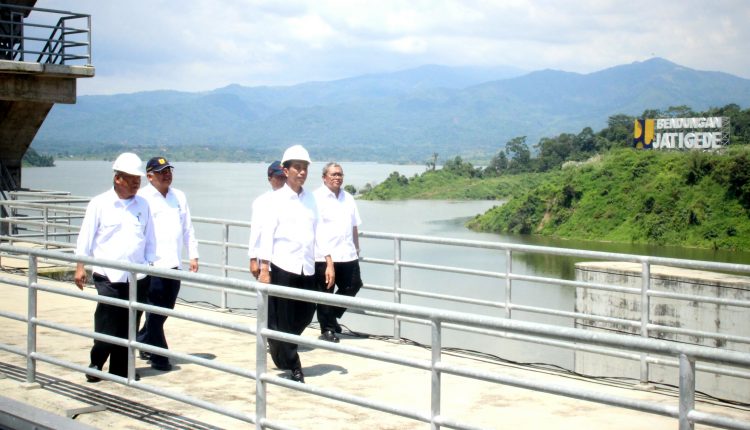Irrigation Rehabilitation Increases Productivity of Agricultural
The government has rehabilitated three million hectares of primary irrigation channels in the last five years. The irrigation rehabilitation project included Lodoyo primary irrigation, Blitar Regency, East Java. Irrigation rehabilitation is expected to boost productivity of agricultural products in Indonesia.
President Joko Widodo (Jokowi) said that three million hectares of rehabilitated irrigation is a target in the national medium-term development plan (RPJMN) in five years.
“The improvement of the primary irrigation that we are targeting in our plan is three million hectares, and this is one of them,” Jokowi said when visiting Lodoyo irrigation rehabilitation through the Cabinet Secretariat’s website, Thursday (01/03/2019).
The Lodoyo primary irrigation was built in 1982 and after there has been no significant rehabilitation. Jokowi said Lodoyo irrigation was rehabilitated so that the existing water was not lost in the middle of the road so that it could continue irrigating the fields.
The Lodoyo irrigation area covers Blitar and Tulungagung districts covering an area of 12,217 hectares. The source of water for this irrigation area comes from the Wlingi Reservoir which blocks the Brantas River.
The rehabilitation project will be carried out from February to December 2018. The rehabilitation of the 16.4 kilometer channel uses a budget of Rp. 12.4 billion.
Based on Government Regulation number 20 of 2006 concerning irrigation, primary irrigation networks are part of an irrigation network consisting of main buildings, primary / primary canals, sewers, buildings, tapping buildings, tapping buildings, and complementary buildings.
Secondary irrigation networks are part of an irrigation network consisting of secondary canals, sewers, buildings, buildings, tapping buildings, and complementary buildings.
Primary and secondary irrigation is handled under the Ministry of PUPR, while tertiary and quaternary irrigation, handling it to its maintenance by farmers.
The Ministry of Agriculture helps improve the empowerment of water-using farmers in the management of tertiary irrigation networks through the activities of Tertiary Irrigation Network Rehabilitation. It is this Tertiary Irrigation Network that enters the rice fields and is directly connected with the farmers.
Minister of Public Works and Public Housing (PUPR) Basuki Hadimuljono said irrigation rehabilitation in Lodoyo could irrigate 12 thousand hectares of rice fields.
So far, the fundamental problem of lowland rice farming is the availability of water, even though Indonesia is in the tropics with high rainfall.
Irrigation canals are believed to be able to increase agricultural crop index (IP) 0.5. “There is a rise in 1,” said the Director General of Agricultural Infrastructure and Facilities (PSP) of the Ministry of Agriculture, Pending Dadih Permana, quoted by Republika.com.
Pending said, many areas have not been touched by irrigation networks or irrigation networks have been damaged, even though the location is close to water sources. As a result, the rice paddy plant does not have enough water supply, so it is only able to reach the harvest once a year with a 1.00 Planting Index.
Reported by Detikcom, Pending said Indonesia had 4.8 million hectares of rice fields with technical irrigation, in which 46 percent of irrigation channels were damaged.
The Ministry of PUPR targets the construction of one million hectares of new irrigation and rehabilitates three million hectares of damaged irrigation networks from the next 2015 to 2019.
Based on the 2015-2019 RPJMN, the government targets to be able to build 1 million new irrigation networks and rehabilitate 3 million irrigation networks to support food security programs. To achieve this target, the government takes into account the budget needs of Rp. 72 trillion.
Construction and rehabilitation of irrigation includes surface irrigation, swamp irrigation, pond irrigation, and groundwater irrigation.
The construction and rehabilitation of the irrigation network will be directed at irrigation in 13 national rice granary provinces, reservoir irrigation, and priority irrigation in the province rather than the national rice barn.
The intended national rice granary provinces include Aceh, North Sumatra, South Sumatra, West Sumatra, Lampung, West Java, Central Java, East Java, NTB, South Kalimantan, West Kalimantan, South Sulawesi and Central Sulawesi.
Source: Beritagar
